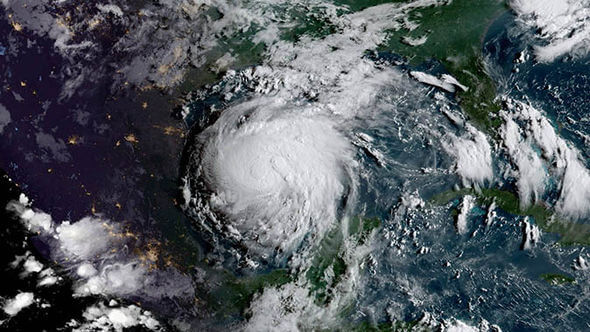While much attention remains on Texas and the destruction left by Hurricane Harvey and its historic rainfall, powerful Hurricane Irma is rapidly intensifying in the open Atlantic and poses a major threat to the Caribbean and potentially to the United States next week.
With the storm still five days away from the outermost Caribbean islands and at least a week away from any potential US impacts, there is still a lot of uncertainty about where it will go.
Advertisement
The range of possibilities presented by the forecast models more than a week out literally spreads from Mexico to Canada — and everywhere in between.
Irma was designated a tropical storm Wednesday morning, and by Thursday afternoon, it had strengthened into a large Category 3 hurricane, with winds of 115 mph.
Such explosive strengthening is known as “rapid intensification,” defined by the National Hurricane Center as having its wind speed increase at least 30 knots (35 mph) in 24 hours.
“Irma has become an impressive hurricane,” the National Hurricane Center said Thursday, noting the rapid intensification. “This is a remarkable 50 knot (58 mph) increase from yesterday at this time.”
Advertisement
Hurricane Harvey underwent rapid intensification just before it made landfall late last Friday, strengthening quickly from a tropical storm into a Category 4 hurricane when it moved onshore near Corpus Christi, Texas.
Irma is a classic “Cape Verde hurricane,” a type of hurricane that forms in the far eastern Atlantic, near the Cape Verde Islands (now known as the Cabo Verde Islands), then tracks all the way across the Atlantic. Cape Verde storms frequently become some of the largest and most intense hurricanes. Examples are Hurricane Hugo, Hurricane Floyd, and Hurricane Ivan.
Hurricane Irma is forecast to continue to strengthen as it moves westward over the next five days, and the official forecast from the National Hurricane Center puts a dangerous Category 4 Hurricane Irma on the doorstep of the Caribbean by the end of the five-day forecast on Wednesday.
A strong high-pressure ridge to the north of Irma, over the Atlantic, is steering the storm to the west and limiting the wind shear in the upper levels of the atmosphere, which has allowed the storm to grow so quickly. Wind shear is like hurricane kryptonite, and prevents storms from forming or gaining strength.
Unfortunately, Irma will remain in a low-shear environment for the next several days, so there isn’t much hope that Irma will weaken any time soon.
Advertisement
There is considerable confidence that Hurricane Irma will track to the west through the weekend and then take a slight jog to the southwest early next week in response “to a building ridge (of high pressure) over the central Atlantic.”
From there, the forecast becomes a lot less clear, with some major differences among some of the key models meteorologists use to forecast hurricanes. The differences are so drastic that one prediction has Irma sliding harmlessly back out to sea, while in another, it makes multiple disastrous landfalls in the Caribbean and likely hits the United States after that.
Irma is still more than 1,700 miles east of the Leeward Islands, and any impacts from the storm wouldn’t be felt until Tuesday or Wednesday for the Leeward Islands and Puerto Rico.
The forecast picture should become clearer after the weekend.
Bottom line: Hurricane Irma is already a powerful hurricane and looks to only become more so. Those with interests in the Caribbean and southeast US coast should pay close attention to the forecast.
CNN



